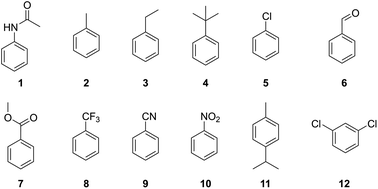Evolution of P450 BM3 is a topic of extensive research, but screening the various substrate/reaction combinations remains a time-consuming process. Indigo production has the potential to serve as a simple high-throughput method for reaction screening, as bacterial colonies expressing indigo (+) variants can be visually identified via their blue phenotype. Indigo (+) single variants, indigo (−) single variants and a combinatorial library, containing mutations that enable the blue phenotype, were screened for their ability to hydroxylate a panel of 12 aromatic compounds using the 4-aminoantipyrine colorimetric assay. Recombination of indigo (+) single variants to create a multiple-variant library is a particularly useful strategy, as all top performing P450 BM3 variants with high hydroxylation activity were either indigo (+) single variants or contained multiple substitutions. Furthermore, active variants, as determined using the 4-AAP assay, were further characterized and several variants were identified that gave more than 90% conversion with 1,3-dichlorobenzene and predominantly formed 2,6-dichlorophenol; other variants showed significant substrate selectivity. This supports the hypothesis that substitution at positions that enable the indigo (+) phenotype, or hotspot residues, is a general mechanism for increasing aromatic hydroxylation activity. Overall, this research demonstrates that indigo (+) single variants, identified via colorimetric colony-based screening, may be recombined to generate a multiply-substituted variant library containing many variants with high aromatic hydroxylation activity. The combination of colony-based screening and other screening assays greatly accelerates enzyme engineering, as readily-identified indigo (+) single variants can be recombined to create a library of active multiple variants without extensive screening of single variants.
